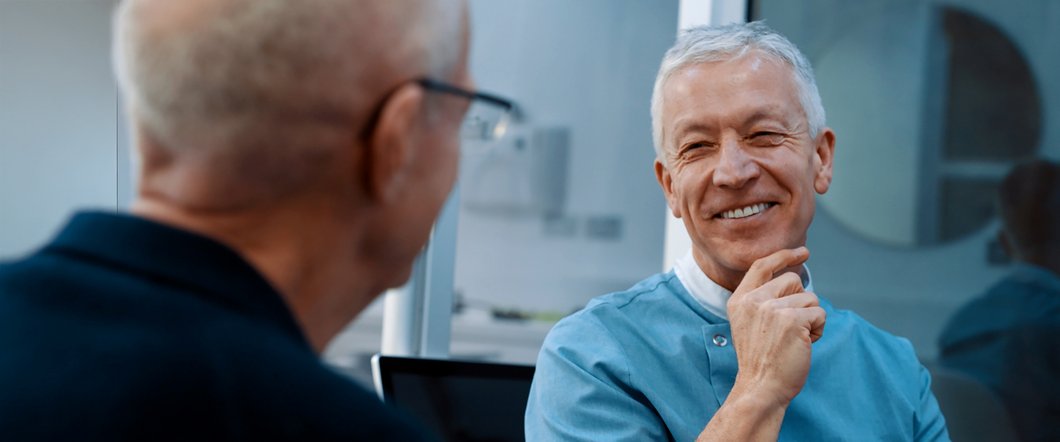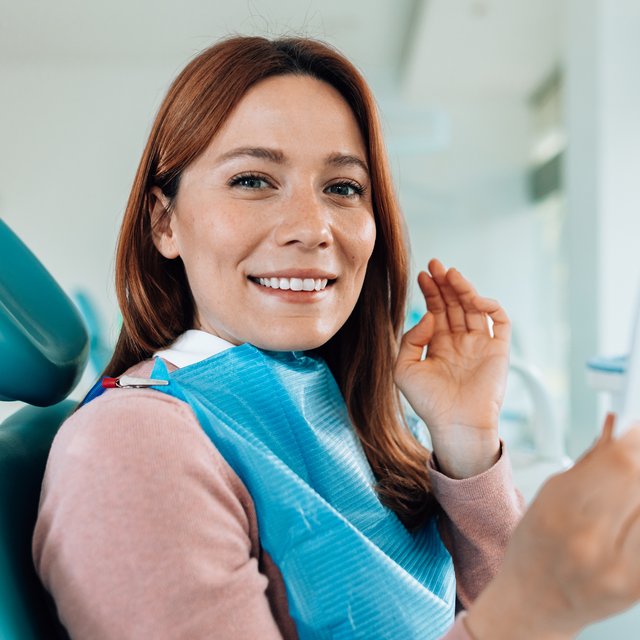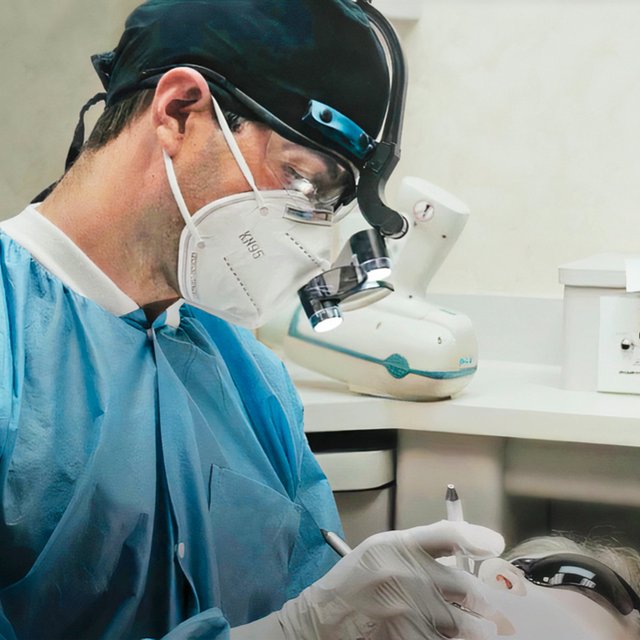The art of dental patient communication


Key Takeaways
- Dental patient communication begins before treatment starts, and builds trust that lasts.
- Listening closely and explaining clearly reduces anxiety and improves treatment acceptance.
- A unified team approach helps patients feel supported at every stage.
- Using premium materials like Geistlich biomaterials reinforces quality and care.
- Small human details, like warmth, comfort, and personal follow-up, make a lasting impression.
What a Visit Feels Like Through the Patient’s Eyes
Nearly nobody wants to come as a patient and meet the team of people who are going to take their teeth out. Nearly everybody comes in with some sort of level of anxiety. We see it every day. Behind the sterile tools and clean white coats is a nervous patient, often scared before they even sit in the chair.
One patient shared after surgery, “It was much better than I expected. I didn’t sleep much last night.” For many, simply walking into the clinic takes courage. Our role is to transform that fear into confidence.
Understanding What’s Really Holding Patients Back
Patients often arrive uncertain, anxious, or even ashamed. They don’t always know what to expect or how to ask. These emotional barriers affect not only their comfort, but also their willingness to trust our recommendations.
Communication helps break those barriers. It’s not just about asking the right questions - it’s about making space for them to answer with honesty and clarity. Often, we just need to ask and then actually stop talking and let them respond.
Building Trust Begins Before Treatment
Trust doesn’t begin in the chair, it starts the moment a patient steps into our practice. That first interaction matters. At our clinic, the tone is set by our treatment coordinator. With warmth and clarity, she helps patients feel welcomed and safe.
The first appointment isn’t just about collecting clinical details. It’s about understanding what the patient fears, what they hope for, and how we can support them, not just with technique, but with presence.
Translate Knowledge into Comfort
Tooth extraction is often one of the most stressful moments in the patient journey. But clear explanations, calm tone, and consistent reassurance can turn it into something much more manageable.
Communicating Quality Through Materials
Trust also grows when patients see the thought behind our clinical choices. For many years, I have used Geistlich products. They are very well researched. They have longevity behind them, and their preparation is meticulous.
Explaining the reasons behind our choices, not just what we’re doing, but why, shows patients that we’re thinking beyond the procedure, and that we’re considering their long-term well-being.
Work as One: Team Communication Builds Trust
Great communication doesn’t happen in isolation. Often, patients give better answers to the team than they do to the dentist. That’s why it’s so important to work in sync.
From our nurses and coordinators to the assistants and reception team, everyone plays a part. A unified, well-prepared team creates a consistent, safe space where patients feel looked after from start to finish.
Ease Anxiety One Detail at a Time
Sometimes what a patient remembers most isn’t the procedure - it’s how they felt. Offering a blanket, adjusting the room temperature, asking "Are you okay?", these little things say, "We see you."
And after treatment, a follow-up call or a warm word on the way out reminds them that care doesn’t stop when the procedure ends. That’s what patients remember. That’s what brings them back.
Personalize the Message, Not Just the Medicine
Clinical outcomes matter. But so do emotional ones. We try to understand what success looks like from the patient’s perspective, whether it’s being able to smile again, eat without worry, or simply feel normal.
When we connect what we’re doing to what really matters to them, our treatment becomes more than technical, it becomes personal.
Grow Into Your Own Style
You don’t need to sound like anyone else. Patients connect with authenticity, not rehearsed lines. When you show that you care it makes all the difference.
You’ll find your own rhythm. Your own way of speaking. And that will be what patients respond to most.
Final Thought: Communication Is Clinical
You can do brilliant work, but if the patient doesn’t feel safe, the outcome won’t feel complete.
Dental patient communication isn’t separate from the clinical part of our work, it is clinical. It’s part of what we do to help someone heal.
Watch the short film to see how our team tries to live this idea day to day. I hope it encourages you to reflect on how you build trust in your own practice.
—Simon Nocton, London, UK

Related Articles





